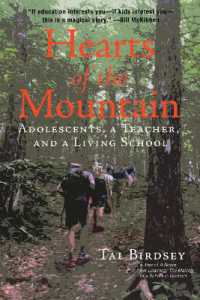- ホーム
- > 洋書
- > 英文書
- > History / World
Full Description
During the late Iron Age (800-539 BCE) in the semi-arid southern Levant, small competing kingdoms navigated a tenuous position between their local populace and the external empires who dominated the region. For kingdoms such as Judah and Edom, this period was also one of opportunity due to their location at the intersection of lucrative trade networks connecting the Mediterranean and Arabian worlds. Such economic opportunity, together with subsistence practices rooted in mobility, resulted in a diverse and contested social landscape in the northeastern Negev borderland region between these two kingdoms. This Element explores the multifaceted interactions in this landscape. Insightful case studies highlight patterns of cross-cultural interaction and identity negotiation through the lenses of culinary practices, religion, language, and text. Ultimately, this analysis explores the lived realities of the region's inhabitants, migrants, and traders over multiple generations, emphasizing social diversity and entanglement as an integral feature of the region.
Contents
1. Introduction; 2. Edom and Judah in Context; 2.1. Geography and Environment; 2.2 Negotiating Autonomy in an Imperial World; 3. Mobility and Local Foreigners in the Northeastern Negev; 4. Identity Negotiation and Social Entanglements; 4.1. Foodways: Maintaining and Trespassing Tradition; 4.1.1. Food Production and Cooking Vessels; 4.1.2. Food Consumption and Iconic Tablewares; 4.2. Living with Gods in Contested Lands; 4.3. Foreign Accents and Scribal Power; 5. Memory and Mythmaking; 5.1 Legendary Patriarchs; 5.2 Entangled and Forgotten Gods; 6. Edom in Judah: Social Entanglement in the Northeastern Negev; 7. Epilogue: Destruction and Defamation; Tables; References.







